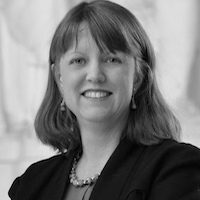Identity | Dale McCreedy
"I think of identity as sort of a sense of someone having a sense of who they are, what they can achieve, what’s possible. And, as something that can evolve and, you know, transform over time with certain influences."

2017 Interview Highlights:
How do you define identity?
Dierking: I try to think about the root of identity, which is about identifying and connecting with a topic and feeling like it’s a part of your life.
McCreedy: I think of identity in terms of someone having a sense of who they are, what they can achieve, what’s possible. It’s something that can evolve and transform over time with certain influences.
Dierking: Yes. It’s really about thinking. Can you see yourself as someone who could be a scientist? Or an artist? Or whatever it is? It’s really part of being able to imagine yourself and begin to work toward something.
How do you think identity matters for science learning?
McCreedy: I think it’s hard for children and youth to imagine being something that they don’t even know anything about. I think that it’s really important for them to have a sense of what’s possible in order to be able to expand the potential. For many years I’ve been an advocate and developer of programs about girls and women in science. I’ve never felt that I was trying to turn every girl or woman into a scientist, but I’ve always felt that they needed to see what was possible so that they could make choices and actually have an opportunity to think about what would be a good fit for them.
Dierking: The way I think about identity is identifying with, connecting to, and understanding the scientific enterprise and how youth fit into it. It seems to me it’s a critical piece of engaging someone in thinking about science, paying attention to science communication and so forth.
We don’t want everyone to be a STEM person. But we do want youth to feel like they could do science. A big issue of mine is to do science even as a leisure pursuit or as a hobby later in life—engage in ways that they have a science-rich life, whether they pursue a career or not. I just think it’s critically important.
How does your approach to identity differ from that of others?
McCreedy: For me, the difference is more about audience. Historically, I’ve focused on adults as critical intermediaries to youth. The biggest focus of my work, over 28 or 29 years at the Franklin Institute and now here at Discovery Center, has been thinking about ways to engage adults in the community—librarians, teachers, parents, youth group facilitators—in seeing themselves as actually having influence and power and the potential to be critical influencers of youth. I think in order to play that kind of role, one has to think about identity and issues of confidence, competency, capacity, and comfort. In helping all these people build an identity, I think my focus has always been on trying to make sure that these critical adults feel comfortable and understand that everybody can’t know everything, and that it’s okay to say “I don’t know,” and that there can be the potential for collaborative learning across generations.
How do you think about science capital?
Dierking: Science capital is present when a family, such as parents, guardians, or grandparents, understand science. They may not know a great deal about it, but they know it’s important, and they know it’s important for their child. So they support it through kids’ hobbies, afterschool activities, and weekend and summer programs. They try to help them choose science-focused experiences. They might watch science television, if they have a television, with their child. It’s a series of things.
How do interest and motivation connect with identity?
Dierking: They’re tied together, and I think they are outcomes. When we try to use them as outcomes, some funders push back and say well, what about learning, or what about concepts? To me, it’s very hard to separate those, and I think that if we can keep youth engaging and participating, I feel like—and probably this is why I am a free-choice, informal person—they will be learning and experiencing. I think it’s really important, and it’s a big part of the Next Generation Science Standards, that yes, science is about knowing stuff and being able to say what you know and what you don’t know. But science is also a set of practices, tools, and ways of looking at the world. Those are outcomes as well.